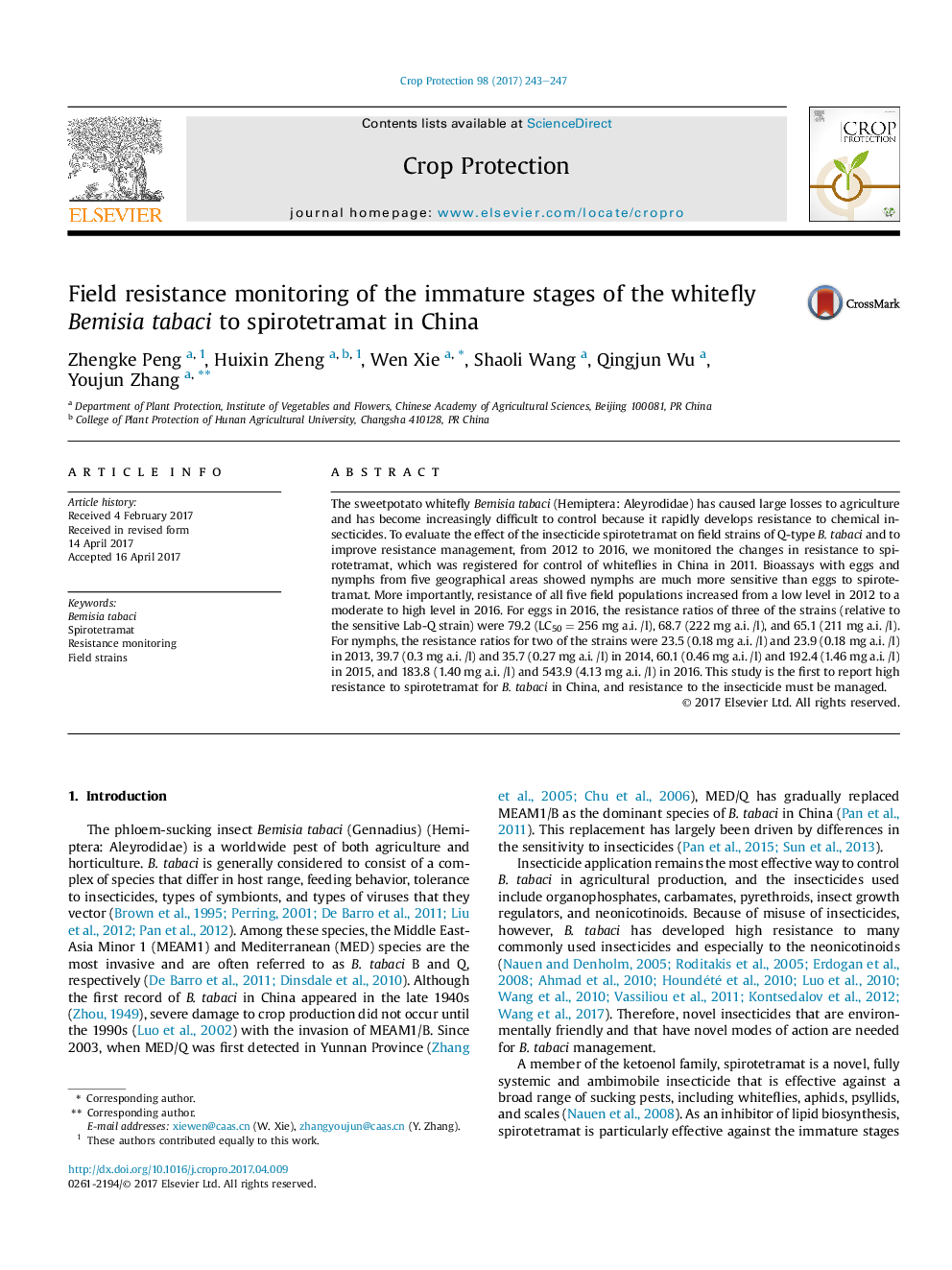| Article ID | Journal | Published Year | Pages | File Type |
|---|---|---|---|---|
| 5760906 | Crop Protection | 2017 | 5 Pages |
Abstract
The sweetpotato whitefly Bemisia tabaci (Hemiptera: Aleyrodidae) has caused large losses to agriculture and has become increasingly difficult to control because it rapidly develops resistance to chemical insecticides. To evaluate the effect of the insecticide spirotetramat on field strains of Q-type B. tabaci and to improve resistance management, from 2012 to 2016, we monitored the changes in resistance to spirotetramat, which was registered for control of whiteflies in China in 2011. Bioassays with eggs and nymphs from five geographical areas showed nymphs are much more sensitive than eggs to spirotetramat. More importantly, resistance of all five field populations increased from a low level in 2012 to a moderate to high level in 2016. For eggs in 2016, the resistance ratios of three of the strains (relative to the sensitive Lab-Q strain) were 79.2 (LC50 = 256 mg a.i. /l), 68.7 (222 mg a.i. /l), and 65.1 (211 mg a.i. /l). For nymphs, the resistance ratios for two of the strains were 23.5 (0.18 mg a.i. /l) and 23.9 (0.18 mg a.i. /l) in 2013, 39.7 (0.3 mg a.i. /l) and 35.7 (0.27 mg a.i. /l) in 2014, 60.1 (0.46 mg a.i. /l) and 192.4 (1.46 mg a.i. /l) in 2015, and 183.8 (1.40 mg a.i. /l) and 543.9 (4.13 mg a.i. /l) in 2016. This study is the first to report high resistance to spirotetramat for B. tabaci in China, and resistance to the insecticide must be managed.
Related Topics
Life Sciences
Agricultural and Biological Sciences
Agronomy and Crop Science
Authors
Zhengke Peng, Huixin Zheng, Wen Xie, Shaoli Wang, Qingjun Wu, Youjun Zhang,
